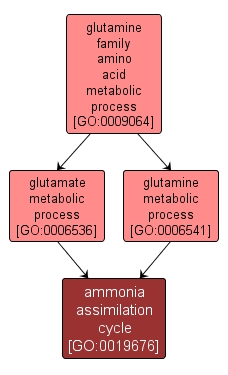| Desc: |
The pathway by which ammonia is processed and incorporated into a cell. In an energy-rich (glucose-containing), nitrogen-poor environment glutamine synthetase and glutamate synthase form an ammonia assimilatory cycle, in which ammonia is incorporated into L-glutamate to form L-glutamine, which then combines with alpha-ketoglutarate to regenerate L-glutamate. This ATP-dependent cycle is essential for nitrogen-limited growth and for steady-state growth with some sources of nitrogen. |














